Një Pasqyrë Magjepsëse e Qytetit Historik Cetinje
Cetinje, shpesh quajtur “Qyteti i Shënjtë” i Malit të Zi, është një perlë historike dhe kulturore që pasqyron thellësinë e trashëgimisë malazeze. Ky qytet i vogël, i vendosur në mes të maleve të mrekullueshme, ka qenë për shekuj me radhë qendra e jetës kulturore, fetare dhe politike të Malit të Zi, duke e bërë atë një destinacion të pazëvendësueshëm për çdo vizitor që dëshiron të zhytet në historinë dhe traditat e Ballkanit. Me muze të pasur, manastire dhe ndërtesa historike, Cetinje është një udhëtim i vërtetë në të kaluarën.
Trashëgimia Kulturore e Cetinjes: Një Thesar i Gjallë
Qyteti mbart një trashëgimi të pasur kulturore që përfshin muze të njohur si Muzeu Kombëtar i Malit të Zi dhe Muzeu Etnografik, ku mund të zbulohet një gamë e gjerë e artit tradicional, kostumeve dhe artefakteve historike. Manastiri i Cetinjes, një nga më të rëndësishmit në rajon, ruan relike të shenjta dhe ofron një pasqyrë të thellë të ndikimeve ortodokse në këtë zonë. Këto vende jo vetëm që tregojnë për historinë, por edhe për rolin e rëndësishëm që ka luajtur Cetinje në formësimin e identitetit kombëtar të Malit të Zi.
Si Ndikon Trashëgimia Kulturore e Cetinjes në Turizmin Lokal?
Trashëgimia kulturore e pasur e Cetinjes është një magnet për turistët që kërkojnë eksperienca autentike. Vizitorët mund të përjetojnë jo vetëm historinë, por edhe traditat e gjalla përmes festivaleve lokale, artizanatit dhe kuzhinës tradicionale malazeze. Kjo lidhje e ngushtë midis të kaluarës dhe jetës së përditshme krijon një ambient unik që bën diferencën në përvojën turistike. Për më shumë rreth turizmit dhe traditave në rajon, lexoni këtë udhëzues të detajuar.
Atraksionet Kryesore që Nuk Duhet Humbur në Cetinje
Përtej muzeve dhe manastireve, Cetinje ofron një peizazh të mrekullueshëm natyror dhe arkitekturë që tregon stilin e periudhave të ndryshme historike. Pikat kryesore përfshijnë Pallatin Mbretëror, i cili është një shembull i shkëlqyer i arkitekturës evropiane të shekullit të 19-të, si dhe Kishën e Shën Mihaljit, e cila është një përzierje unike e elementeve bizantine dhe perëndimore. Për dashamirët e natyrës, shëtitjet në Parkun Kombëtar Lovćen afër Cetinjes janë një mënyrë ideale për të eksploruar peizazhet malore dhe për të ndjerë lidhjen e thellë mes natyrës dhe kulturës.
Eksperience e Thellë dhe Njohuri Ekspertësh për Vizitorët
Shumë udhëtarë që kanë vizituar Cetinjen shprehin se ajo nuk është thjesht një destinacion turistik, por një eksperiencë e thellë kulturore dhe historike që lë gjurmë të paharrueshme. Një shembull praktik është pjesëmarrja në një prej festivaleve lokale ku mund të shijosh muzikën tradicionale, vallëzimet dhe ushqimet autoktone. Në këtë mënyrë, vizitorët përjetojnë një lidhje autentike me komunitetin dhe trashëgiminë e tij, duke kuptuar më mirë kompleksitetin e historisë së Ballkanit dhe rëndësinë e ruajtjes së saj për brezat e ardhshëm.
Për më shumë udhëzime dhe eksplorime në rajonin e Ballkanit, mund të vizitoni këtë burim të pasur që mbulon kulturën dhe historinë e thelluar të rajonit.
Ftojmë Lexuesit të Ndajnë Përvojat e Tyre
Nëse keni vizituar ndonjëherë Cetinjen ose jeni duke planifikuar një udhëtim atje, na tregoni përvojat tuaja në komentet më poshtë. Ndani momentet tuaja të preferuara dhe atraksionet që ju kanë lënë përshtypje, duke ndihmuar kështu edhe udhëtarë të tjerë të zbulojnë thesaret e këtij qyteti unik.
Uncovering Lesser-Known Historic Sites in Cetinje
While the prominent landmarks like the Royal Palace and the Cetinje Monastery captivate many visitors, Cetinje holds several lesser-known historic sites that offer profound insights into Montenegro’s complex past. For instance, the Biljarda Museum, once the residence of Petar II Petrović-Njegoš, presents an intimate look into the life of one of Montenegro’s most revered poets and rulers. Additionally, the Museum of King Nikola provides an extensive collection of artifacts that illuminate the Montenegrin monarchy’s role in shaping national identity during the 19th and early 20th centuries. Exploring these sites allows scholars and enthusiasts alike to grasp the nuanced interplay of culture, politics, and art that characterized Cetinje’s historical evolution.
The Role of Cetinje in Montenegrin National Identity Formation
Cetinje’s significance transcends its geographical size; it has been the ideological heart of Montenegrin sovereignty and cultural expression. As noted by historian John Fine in Encyclopedia Britannica, Cetinje served as the capital of the Prince-Bishopric of Montenegro and later as the royal capital, embodying the resistance against Ottoman rule and the assertion of a distinct Montenegrin identity. The city’s institutions, including its printing press established in the 19th century, were instrumental in disseminating national literature and political thought, fostering a cohesive narrative that united diverse tribes and clans. This rich historical context is essential for understanding contemporary Montenegro’s cultural and political landscape.
How Does Cetinje’s Historical Legacy Influence Modern Montenegrin Culture and Tourism?
Understanding Cetinje’s historical legacy is crucial for appreciating its current cultural vitality and tourism appeal. The city’s preservation efforts, such as maintaining traditional architecture and promoting festivals that celebrate historic events, actively engage both locals and visitors in the continuity of Montenegrin heritage. Events like the Cetinje Cultural Summer Festival showcase traditional music, dance, and crafts, allowing tourists to immerse themselves in authentic cultural experiences. Moreover, the integration of educational tours and interactive museum exhibits helps tourists contextualize Cetinje’s past within broader Balkan history. These dynamics exemplify how heritage tourism can be leveraged to sustain cultural identity while promoting economic development.
For travelers interested in exploring more of the region’s cultural richness, consider browsing detailed guides on the culture and history of the Balkans to complement your understanding.
The Intersection of Nature and History: Lovćen National Park as a Cultural Landscape
Just a short distance from Cetinje lies Lovćen National Park, an area that beautifully melds natural splendor with profound cultural significance. The park is home to the Mausoleum of Njegoš, a monument dedicated to the aforementioned Montenegrin ruler and poet, perched atop Mount Lovćen’s peak. The site offers panoramic vistas that inspire reflection on Montenegro’s historical struggles and triumphs. Walking trails winding through the park invite visitors to experience the biodiversity and geological formations that have shaped the region’s identity over centuries. This blend of nature and history underscores the importance of preserving cultural landscapes as holistic heritage sites.
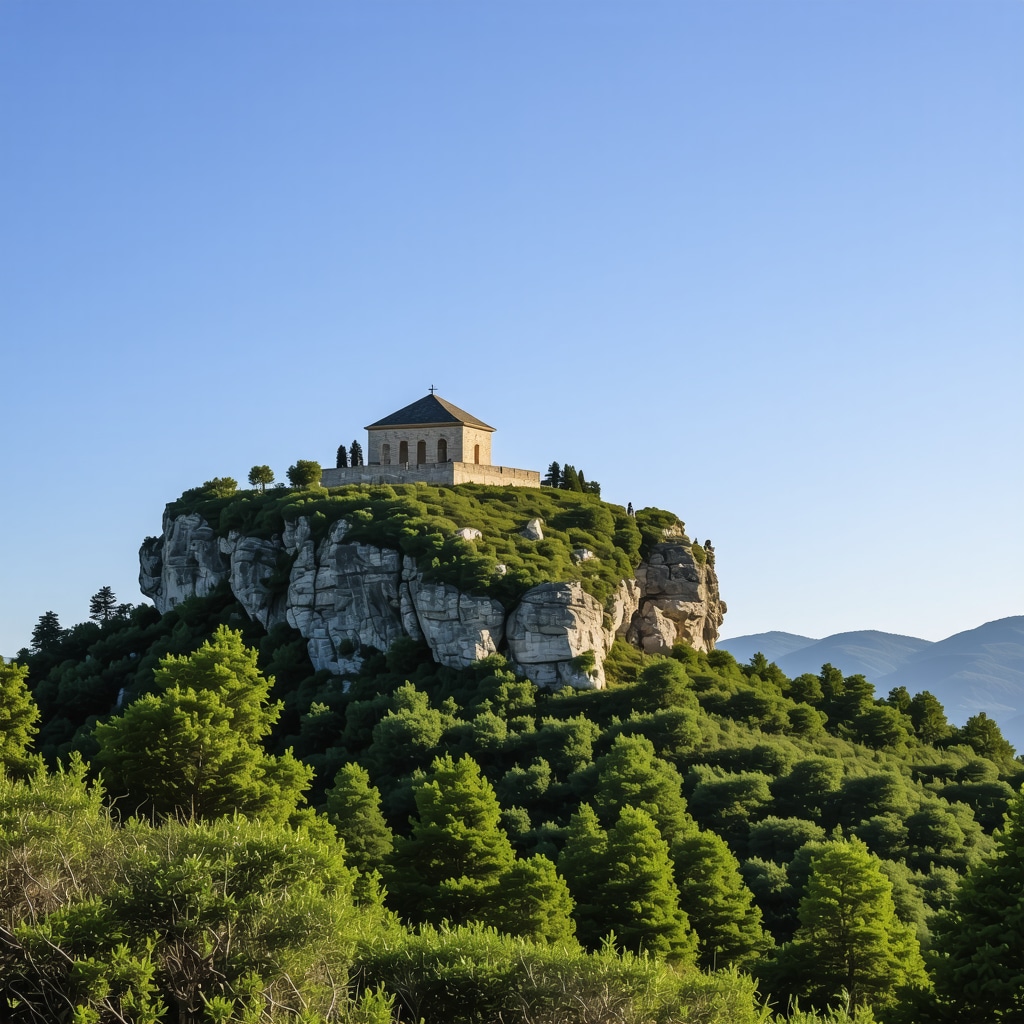
Engage with Cetinje: Sharing Insights and Experiences
We invite scholars, travelers, and culture enthusiasts to share their insights and personal experiences related to Cetinje. Whether it’s an academic observation, a memorable encounter with local traditions, or recommendations for hidden gems within the city, your contributions enrich the collective understanding of this unique historical hub. Feel free to leave comments below or share this article with fellow explorers interested in deepening their knowledge of Montenegro’s rich heritage.
Advanced Strategies for Preserving Cetinje’s Unique Architectural Heritage
Preservation of Cetinje’s architectural heritage demands a sophisticated approach that balances conservation with modern urban needs. Experts emphasize the necessity of employing cutting-edge restoration technologies, such as laser scanning and 3D modeling, to document and restore historic buildings accurately while maintaining their original materials and craftsmanship. This approach not only safeguards the structural integrity of landmarks like the Biljarda Museum and Royal Palace but also enhances their accessibility and interpretive potential for visitors. Furthermore, integrating heritage-sensitive urban planning ensures that new developments complement the historic urban fabric without compromising cultural authenticity, a challenge that Cetinje’s municipal authorities have been navigating with increasing expertise.
What Are the Most Effective Methods for Balancing Tourism Growth and Heritage Conservation in Cetinje?
Balancing tourism expansion with heritage conservation requires multi-disciplinary strategies that encompass regulatory frameworks, community engagement, and sustainable tourism practices. Key methods include implementing visitor management systems to control foot traffic in sensitive sites, promoting off-season tourism to reduce pressure during peak periods, and incentivizing local businesses to adopt eco-friendly and culturally respectful operations. Additionally, fostering partnerships between conservationists, tourism operators, and local communities ensures that economic benefits from tourism directly support preservation efforts and cultural activities. The UNESCO guidelines on heritage site management provide a robust framework for such integrated approaches, emphasizing adaptive reuse and participatory governance (UNESCO World Heritage Centre Guidelines).
Leveraging Digital Technologies to Enhance Cultural Tourism Experiences in Cetinje
In the digital era, Cetinje can harness innovative technologies such as augmented reality (AR) and virtual reality (VR) to enrich visitors’ understanding of its complex history. AR applications can overlay historical reconstructions onto current street views, allowing tourists to visualize past events or architectural changes dynamically. Meanwhile, VR experiences can recreate immersive environments, such as the court of Petar II Petrović-Njegoš, offering deeper engagement beyond static exhibits. These digital tools not only attract tech-savvy travelers but also provide educational platforms that transcend language barriers and accessibility limitations, making Cetinje’s heritage more inclusive and globally reachable.
Community-Led Initiatives: Empowering Local Voices in Cetinje’s Heritage Tourism
Empowering local communities is pivotal for authentic and sustainable heritage tourism. Community-led initiatives in Cetinje, such as artisan cooperatives and cultural storytelling projects, foster a sense of ownership and pride while diversifying the tourism offer. These initiatives encourage residents to share personal narratives, traditional crafts, and culinary practices, generating unique, participatory experiences for visitors. Such grassroots involvement ensures that tourism development aligns with community values and socio-economic needs, mitigating cultural commodification risks. Moreover, training programs for locals in tourism management and heritage interpretation build capacity and sustain long-term stewardship.
Environmental Sustainability in the Cultural Landscape of Lovćen National Park
The cultural significance of Lovćen National Park is inseparable from its ecological integrity, necessitating comprehensive environmental sustainability measures. Conservation programs focus on protecting endemic species, managing forest health, and maintaining trails to prevent erosion, all critical for preserving the park’s natural and cultural assets. Collaborative efforts with scientific institutions facilitate ongoing ecological monitoring, while educational campaigns raise awareness about the symbiotic relationship between nature and Montenegrin heritage. Integrating sustainability into tourism infrastructure, such as eco-friendly visitor centers and renewable energy sources, exemplifies Cetinje’s commitment to preserving this cultural landscape for future generations.
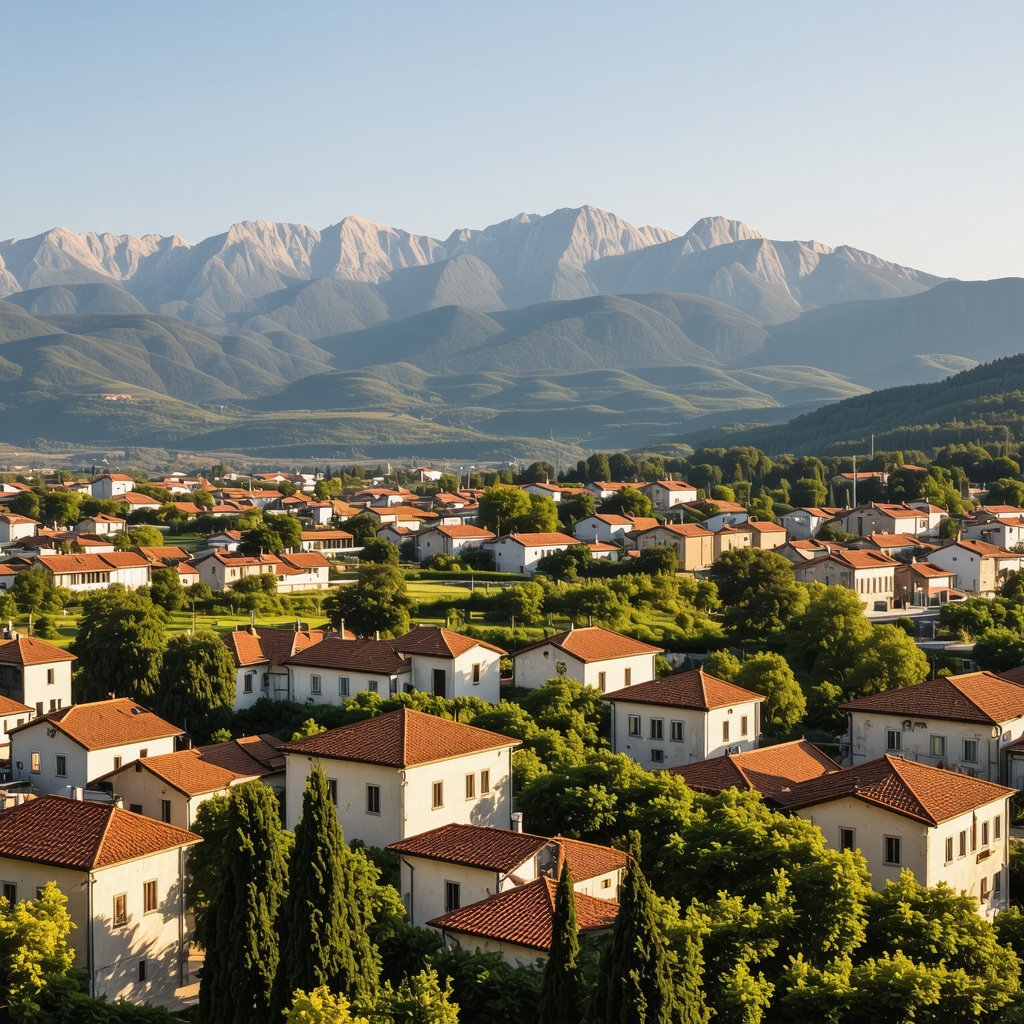
For scholars and travelers eager to delve deeper into Cetinje’s evolving heritage management and tourism strategies, exploring interdisciplinary research and engaging with local conservation projects offer invaluable perspectives. Share your thoughts or experiences below to contribute to this dynamic discourse and help shape the future of Montenegro’s cultural preservation.
Cutting-Edge Conservation Techniques Elevating Cetinje’s Architectural Legacy
Preserving Cetinje’s unique architectural heritage demands not only traditional craftsmanship but also the integration of advanced technologies. Employing laser scanning and precision 3D modeling enables heritage experts to capture minute structural details, facilitating meticulous restorations that honor original building materials and design. These technologies provide invaluable data sets for monitoring the condition of sites like the Biljarda Museum and the Royal Palace, allowing preemptive intervention against deterioration. Incorporating such digital preservation tools enhances both the longevity and interpretive richness of Cetinje’s historic environment, setting a benchmark for heritage conservation in the region.
Sophisticated Approaches to Harmonizing Tourism Growth with Cultural Integrity
As Cetinje attracts increasing numbers of tourists, balancing visitor influx with heritage preservation becomes paramount. Effective solutions entail multifaceted strategies: implementing visitor caps in sensitive areas, diversifying tourist flows through off-peak season promotions, and incentivizing local enterprises to adopt sustainable, culturally respectful practices. Collaborative frameworks involving conservationists, municipal authorities, and community stakeholders ensure that tourism revenues are reinvested into preservation and cultural programming. The UNESCO World Heritage Centre’s guidelines (UNESCO World Heritage Centre Guidelines) provide a comprehensive blueprint for adaptive reuse and participatory governance models that Cetinje’s planners are increasingly embracing.
How Can Digital Innovation Enhance Visitor Engagement While Safeguarding Cetinje’s Heritage?
Digital technologies such as augmented reality (AR) and virtual reality (VR) represent transformative tools in heritage tourism, offering immersive and educational experiences without physical impact on sensitive sites. AR overlays can reconstruct historical settings in situ, allowing visitors to visualize architectural evolutions or historic events dynamically. VR simulations recreate authentic environments—such as the royal courts or traditional festivals—enabling deeper cultural immersion. These platforms also transcend linguistic and physical accessibility barriers, democratizing heritage appreciation. By integrating these innovations, Cetinje can amplify cultural transmission and visitor satisfaction while minimizing wear on its irreplaceable assets.
Empowering Local Communities as Custodians of Cultural Tourism
Community-driven initiatives play a critical role in ensuring that heritage tourism remains authentic and sustainable. In Cetinje, artisan cooperatives, cultural storytelling projects, and culinary workshops foster local participation and pride. These programs not only preserve intangible cultural heritage but also diversify economic benefits, reducing dependency on mass tourism. Capacity-building workshops equip residents with skills in tourism management and heritage interpretation, enabling them to become proactive stewards of their traditions. Such grassroots empowerment mitigates risks of cultural commodification and promotes socially equitable tourism development.
Integrating Environmental Stewardship within Lovćen National Park’s Cultural Fabric
The inseparability of ecological health and cultural significance in Lovćen National Park necessitates holistic sustainability strategies. Conservation efforts focus on protecting endemic flora and fauna, maintaining trail integrity to prevent erosion, and managing forest ecosystems. Collaborative partnerships with scientific organizations facilitate ongoing ecological monitoring and adaptive management. Educational initiatives raise visitor awareness about the symbiotic relationship between Montenegro’s natural landscapes and cultural identity. Infrastructure investments prioritize eco-friendly materials and renewable energy, exemplifying Cetinje’s commitment to preserving this emblematic cultural landscape for posterity.
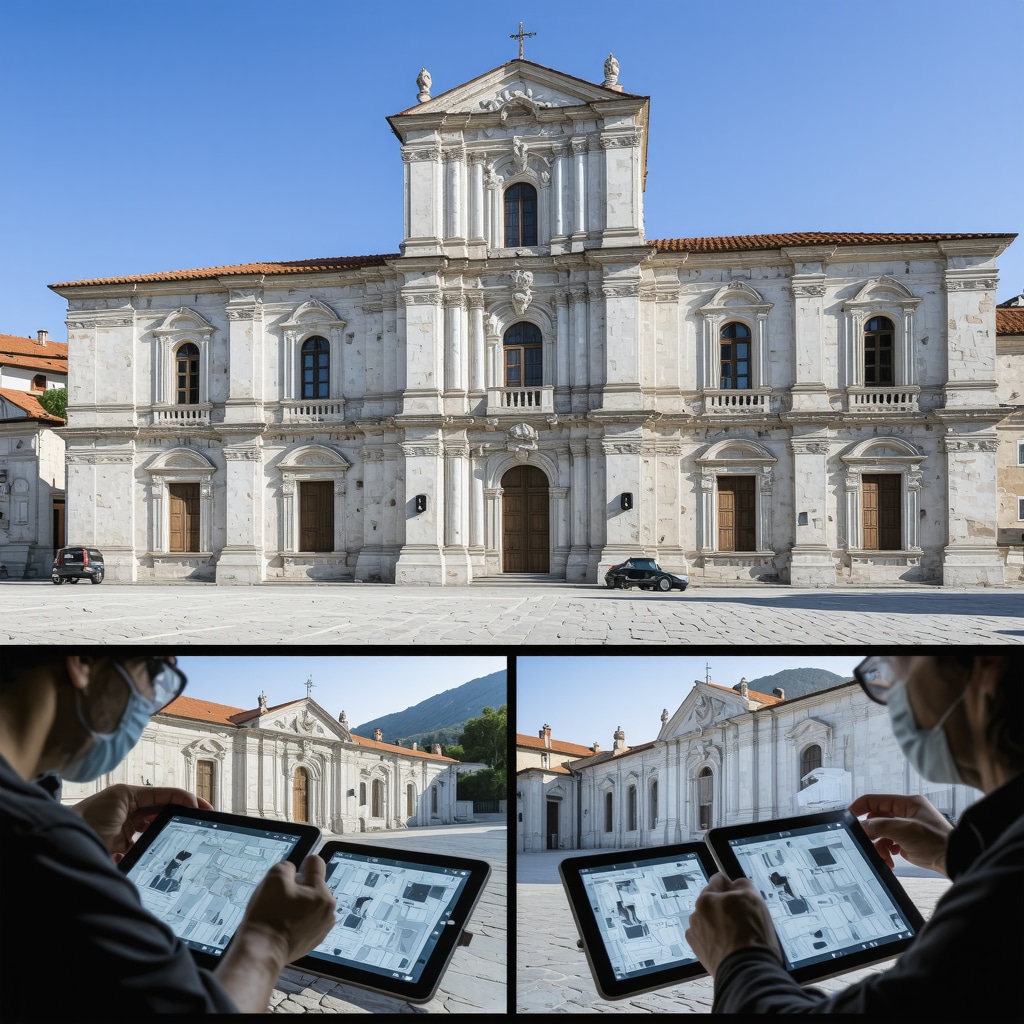
Scholars and practitioners eager to explore these advanced heritage management and tourism strategies are encouraged to engage with local projects and share their insights. Contribute to the discourse by commenting below and help shape the sustainable future of Cetinje’s cultural legacy.
Frequently Asked Questions (FAQ)
Çfarë e bën Cetinjen një qytet unik në historinë dhe kulturën e Malit të Zi?
Cetinje është qendra historike dhe kulturore që ka shërbyer si kryeqytet i princërve dhe mbretërve të Malit të Zi. Trashëgimia e saj përfshin institucione të rëndësishme historike, muze dhe manastire që kanë luajtur rol kyç në formësimin e identitetit kombëtar malazez.
Si mund të përjetoj një vizitë autentike kulturore në Cetinje?
Për të pasur një përvojë autentike, është e rekomandueshme të vizitoni muze të njohur si Muzeu Kombëtar dhe Biljarda, të merrni pjesë në festivale lokale me muzikë dhe vallëzime tradicionale, si dhe të eksploroni artizanatin dhe kuzhinën tradicionale malazeze.
Çfarë rol luan Parku Kombëtar Lovćen në trashëgiminë kulturore të rajonit?
Parku Lovćen është një peizazh i rëndësishëm ku natyra dhe kultura bashkëjetojnë. Ai përmban mausoleumin e Njegošit dhe ofron rrugë për shëtitje që lidhin vizitorët me historinë dhe biodiversitetin unik të Malit të Zi.
Si ndihmojnë teknologjitë digjitale në ruajtjen dhe promovimin e trashëgimisë së Cetinjes?
Teknologjitë si realiteti i shtuar (AR) dhe realiteti virtual (VR) ofrojnë mundësi për rikrijimin interaktiv të ngjarjeve historike dhe ndërtesave, duke rritur angazhimin e vizitorëve pa dëmtuar ambientet historike dhe duke ofruar akses më të gjerë për audienca globale.
Si mund të sigurohet balanca mes zhvillimit të turizmit dhe ruajtjes së trashëgimisë?
Kjo arrihet përmes menaxhimit të vizitorëve, promovimit të turizmit jashtë sezonit të lartë, përfshirjes së komuniteteve lokale në vendimmarrje dhe adoptimit të praktikave të qëndrueshme që mbrojnë integritetin kulturor dhe mjedisor.
Çfarë iniciativash komunitare ekzistojnë për të fuqizuar banorët lokalë në turizmin e trashëgimisë?
Pse është e rëndësishme integrimi i qëndrueshmërisë mjedisore në menaxhimin e Parkut Kombëtar Lovćen?
Qëndrueshmëria mjedisore ruan biodiversitetin dhe peizazhet natyrore që janë pjesë e trashëgimisë kulturore të zonës, duke siguruar që kjo ndërthurje unike natyre-kulturë të mbetet për brezat e ardhshëm dhe të vazhdojë të tërheqë vizitorë me interes të lartë.
Trusted External Sources
- Encyclopedia Britannica – Montenegro: Burim autoritativ për historinë dhe rolin e Cetinjes në formësimin e identitetit kombëtar malazez, duke ofruar kontekst të thelluar historik.
- UNESCO World Heritage Centre Guidelines: Udhëzime zyrtare mbi menaxhimin dhe ruajtjen e vendeve të trashëgimisë, të cilat janë bazë për strategjitë e balancimit të turizmit dhe konservimit në Cetinje.
- Muzeu Kombëtar i Malit të Zi: Institucioni kryesor muzeal që ruan dhe prezanton artefakte historike dhe kulturore të rëndësishme për shpjegimin e kulturës dhe historisë malazeze.
- Lovćen National Park Authority: Burim i specializuar për menaxhimin e parqeve kombëtare dhe ruajtjen e ekosistemeve dhe trashëgimisë kulturore në rajon.
- Research Papers on Balkan Cultural Heritage: Studime akademike që analizojnë ndikimet kulturore, politike dhe sociale të trashëgimisë në Ballkan, duke përfshirë rolin unik të Cetinjes.
Conclusion
Cetinje përfaqëson një përzierje të jashtëzakonshme të historisë, kulturës dhe natyrës që e bën atë një qendër të rëndësishme për ruajtjen e identitetit kombëtar malazez dhe promovimin e turizmit të trashëgimisë. Duke eksploruar muze të njohur dhe vende historike të fshehura, vizitorët mund të kuptojnë ngjarjet që kanë formësuar këtë rajon kompleks dhe të përjetojnë traditat autentike të komunitetit. Integrimi i teknologjive digjitale, bashkëpunimi me komunitetin lokal dhe kujdesi për mjedisin në Parkun Kombëtar Lovćen janë shtylla kryesore që do të sigurojnë mbijetesën dhe zhvillimin e qëndrueshëm të këtij thesari kulturor. Ju ftojmë të ndani këtë artikull, të komentoni përvojat tuaja dhe të eksploroni më shumë burime ekspertësh për të thelluar njohuritë rreth këtij qyteti unik historik dhe kulturor.
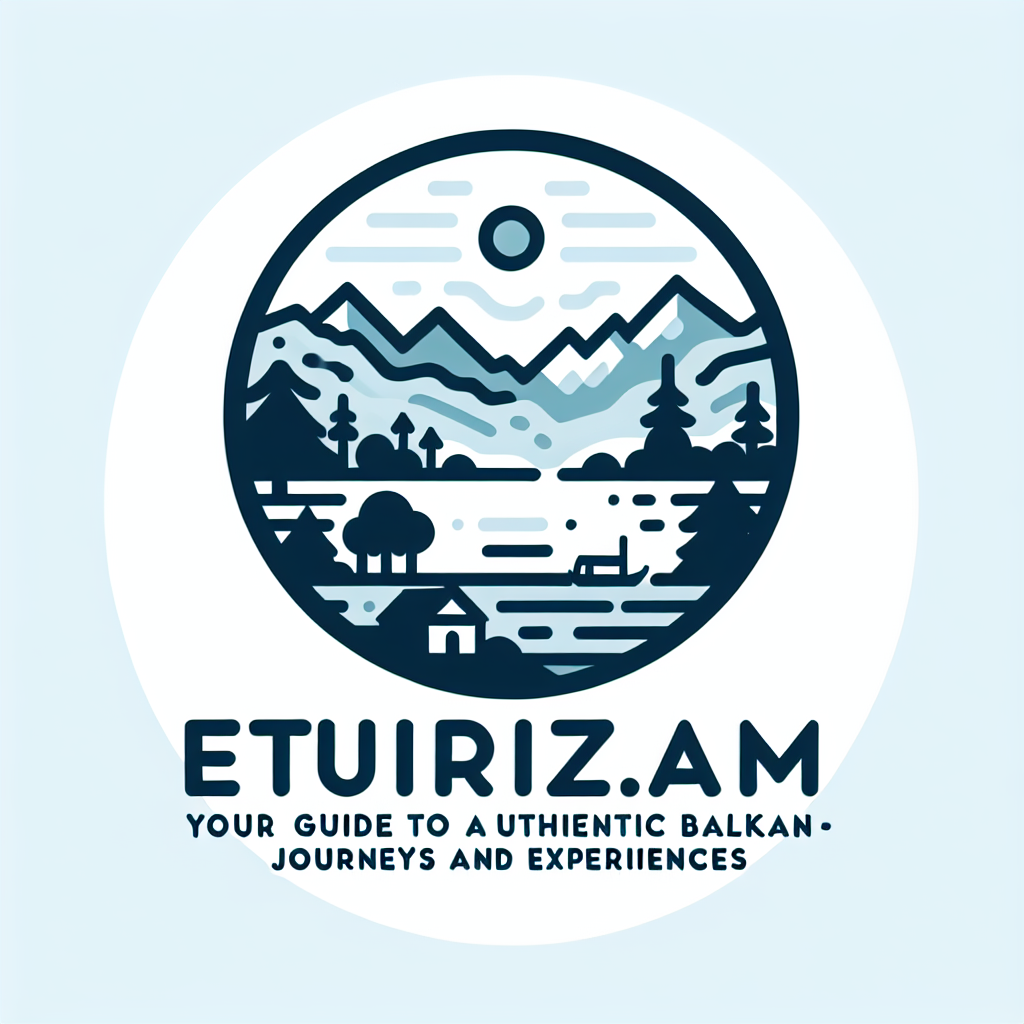
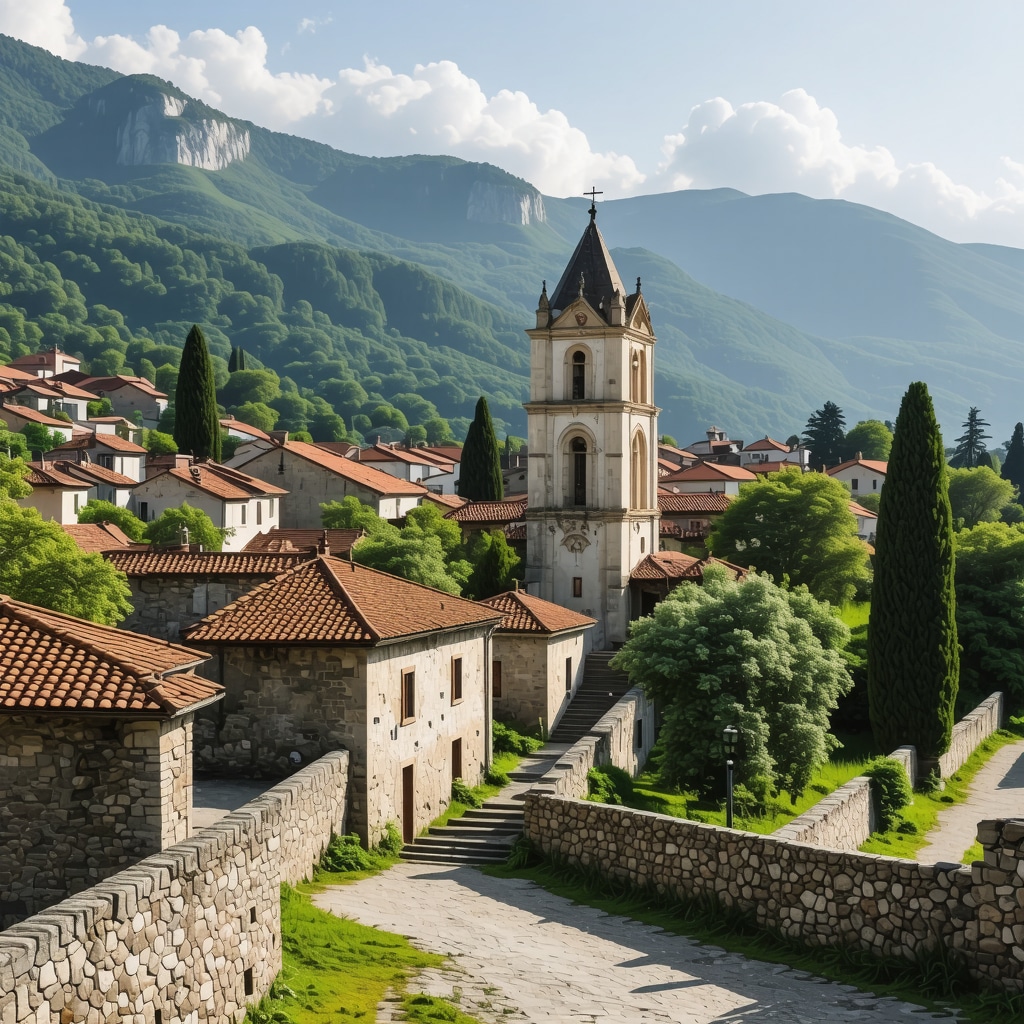
Jam shumë e impresionuar nga mënyra se si Cetinje kombinon historinë e pasur me natyrën mbresëlënëse. Trashëgimia kulturore, me muze të tillë si Muzeu Kombëtar dhe Biljarda, me të vërtetë të hedhë në një rrugëtim në të kaluarën e Malit të Zi dhe të gjithë Ballkanit. Më ka pëlqyer ideja se festivale dhe artizanat lokale nuk janë vetëm për turizëm, por edhe mënyra për komunitetin lokal që të ruajë dhe ndajë identitetin e tyre unik. Një aspekt që më tërhoqi vëmendjen është përdorimi i teknologjive AR dhe VR për të përforcuar përvojën e vizitorëve, duke e bërë historinë më të gjallë dhe të aksesueshme pa rrezikuar dëmtimin e monumenteve. Si dikush që ka vizituar vende historike ku trashëgimia rrezikohet për shkak të turizmit masiv, më intereson të di se si komuniteti lokal dhe autoritetet e Cetinjes bashkëpunojnë praktikisht për të menaxhuar fluksin e turistëve dhe për të siguruar që zhvillimi i turizmit të bëhet në mënyrë që të ruhet autenticiteti. A ka ndonjë përvojë konkrete që mund të ndajmë për menaxhimin e qëndrueshëm të turizmit në qytete me trashëgimi të ngjashme?
Në lidhje me pyetjen e Elirës për menaxhimin e qëndrueshëm të turizmit në qytetet me trashëgimi të pasur historike si Cetinje, dua të shtoj se një nga praktikat më efektive që kam vërejtur në qytete të ngjashme në Ballkan është përfshirja aktive e komunitetit lokal në vendimmarrje dhe menaxhimin e turizmit. Në qytetin tim, kemi pasur përvojë me krijimin e grupeve të përfaqësuesve lokalë që punojnë ngushtësisht me autoritetet për të kontrolluar fluksin e vizitorëve, veçanërisht në sezonet e zëna, duke ofruar alternativa turistike jashtë sezonit. Kjo ndihmon për të shmangur mbingarkesën në sitet historike dhe nxit zhvillimin ekonomik të gjithëzonave rreth qytetit.
Gjithashtu, edukimi dhe sensibilizimi i turistëve për rëndësinë e ruajtjes së trashëgimisë kulturore dhe natyrore është kyç. Në atë aspekt, përdorimi i teknologjive si AR dhe VR, siç përmendet në postim, i jep një dimension të ri përvoja turistike duke ulur nevojën për prezencë fizike të vazhdueshme në monumente të ndjeshme.
Me këtë perspektivë, më intereson të dëgjoj nga të tjerët: si e balancojnë komunitetet e tyre nevojën për zhvillim ekonomik përmes turizmit me nevojën për të ruajtur autenticitetin dhe integritetin e trashëgimisë kulturore? A ekzistojnë projekte konkretë që kanë funksionuar mirë në zona të tjera me sfida të ngjashme?
Duke lexuar diskutimet për menaxhimin e qëndrueshëm të turizmit në qytete si Cetinje, më erdhi në mendje rëndësia e balancimit midis ruajtjes së trashëgimisë dhe zhvillimit ekonomik lokal. Siç përmendet në artikull dhe nga Arbeni në koment, përfshirja e komunitetit lokal është thelbësore. Një përvojë që kam ndjekur nga një qytet i vogël historik në Shqipëri tregon se përveç menaxhimit të fluksit të vizitorëve, edukimi i vazhdueshëm për rëndësinë e trashëgimisë kulturore tek turistët dhe banorët ka pasur efekt të madh. Një organizatë lokale përfshiu rrëfime dhe aktivitete që lidhnin historinë me jetën e përditshme, duke rritur ndërgjegjësimin dhe përgjegjësinë social.
Më pëlqen shumë ideja e përdorimit të teknologjive AR dhe VR për të zvogëluar ndikimin në monumentet historike, dhe e shoh si një qasje inovative që meriton të përhapet më gjerë. Megjithatë, shërben gjithashtu për të pasuruar turistët me një kuptim më të thellë të historisë dhe kulturës.
Dëshiroj të di, siç e përmend dhe artikulli, cili është roli i festivalve kulturore në ruajtjen e identitetit lokal te komunitetet në qytete si Cetinje? A ka dikush nga ju përvoja apo mendime mbi ndikimin e ngjarjeve kulturore në fuqizimin e përkatësisë lokale dhe tërheqjen e turistëve?
Duke reflektuar mbi pasurinë kulturore të Cetinjes dhe rolin e saj në turizmin lokal, më bën përshtypje mënyra se si ky qytet i vogël, me trashëgiminë e tij të thellë historike dhe kulturore, ofron një përvojë autentike për vizitorët. Një pikë që më ka tërhequr vëmendjen është bashkëjetesa e trashëgimisë kulturore me natyrën përmes zonës së Parkut Kombëtar Lovćen. Kjo ndërthurje unike, ku mund të eksplorosh trashëgiminë historike dhe peizazhet natyrore njëkohësisht, duhet të jetë një shtysë e madhe për zhvillimin e turizmit të qëndrueshëm në rajon. Përjetimi i festivaleve lokale, artizanatit dhe kuzhinës tradicionale, siç përmendet në postim, e bën lidhjen midis të kaluarës dhe jetës së sotme më të gjallë dhe më domethënëse për turistët. Në anën tjetër, kërkesa për ruajtjen e autenticitetit dhe menaxhimin e fluksit të vizitorëve mbetet një sfidë kryesore për autoritetet lokale. Do të ishte interesante të dëgjojmë se cilat metoda specifike janë aplikuar në Cetinje për të ruajtur ekuilibrin midis promovimit të turizmit dhe konservimit të trashëgimisë kulturore e natyrore, sidomos në lidhje me përdorimin e teknologjive si AR dhe VR që përmenden në artikull. A kanë komunitetet lokale një rol aktiv në këtë proces? Çfarë eksperiencash apo suksesi ka pasur kjo qasje në ndërthurjen e historisë me turizmin?